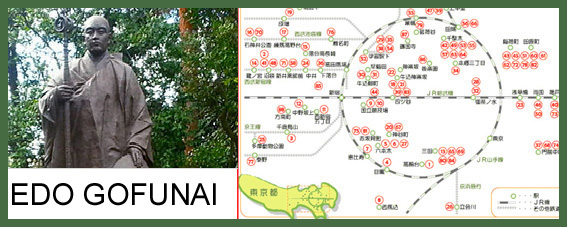:::::::::::::::::::::::::::::::::::::::::::::::::::::::::::::::::::::::::::::::::::::::::::::::::::::::::::::::::::::::::::
Darumapedia on Facebook
- The latest news is always HERE:

. Daruma Museum - Newsletter .
. . . . . Expanded older entries will be added here since 2016:
. groups.io/g/darumapediamemo .
. Darumapedia - small news BLOG .
:::::::::::::::::::::::::::::::::::::::::::::::::::::::::::::::::::::::::::::::::::::::::::::::::::::::::::::::::::::::::::
The Darumapedia has expanded over the years.
Here is a list (growing) of my presence on facebook :
:::::::::::::::::::::::::::::::::::::::::::::::::::::::::::::::::::::::::::::::::::::::::::::::::::::::::::::::::::::::::::

. Joys of Japan - Main Gallery .

. Joys of Japan - Poetry for Tohoku .

. Tohoku Japan - Information .

. WASHOKU - Japanese Food Culture .
:::::::::::::::::::::::::::::::::::::::::::::::::::::::::::::::::::::::::::::::::::::::::::::::::::::::::::::::::::::::::::

. MINGEI - Japanese Folk Art .

. Kokeshi Gallery .

. Japanese Festivals - Matsuri .

. Japanese Interior Gallery .
:::::::::::::::::::::::::::::::::::::::::::::::::::::::::::::::::::::::::::::::::::::::::::::::::::::::::::::::::::::::::::

. Japanese Literature .

. Japanese People .

. Japanese Calendar Days .
:::::::::::::::::::::::::::::::::::::::::::::::::::::::::::::::::::::::::::::::::::::::::::::::::::::::::::::::::::::::::::

. Edo - the Edo Period .

. Edo - Senryu 川柳 .

. Edo culture via Ukiyo-E 浮世絵 .

. Gofunai 御符内 88 Henro temples in Edo .
:::::::::::::::::::::::::::::::::::::::::::::::::::::::::::::::::::::::::::::::::::::::::::::::::::::::::::::::::::::::::::

. Fudo Myo-O 不動明王 .

. Jizo Bosatsu Gallery 地蔵菩薩 .
- and more -
. Buddha Statues - Japanese Deities .

. Enku - Master Carver 円空 .

. Buddhist Temples - Japan .

. Shinto Shrines - Japan .

. Ta no Kami Yama no Kami 田の神 山の神 .
:::::::::::::::::::::::::::::::::::::::::::::::::::::::::::::::::::::::::::::::::::::::::::::::::::::::::::::::::::::::::::

. Japan in Spring .
. Japan in Summer .
. Japan in Autumn .
. Japan in Winter .

. Japan - New Year Season .

. Fujisan Gallery - Japan .
. Dragon Gallery - Asian Art and Animals .

. Japan - Animals .
:::::::::::::::::::::::::::::::::::::::::::::::::::::::::::::::::::::::::::::::::::::::::::::::::::::::::::::::::::::::::::

. Haiku Culture Magazin .

. Matsuo Basho .

. Kobayashi Issa .

. Yosa Buson .

. Masaoka Shiki .

. Mongolia Saijiki - Mongolian Haiku .

. WKD - World Kigo Database .

. Japanese Haiku Poets .
:::::::::::::::::::::::::::::::::::::::::::::::::::::::::::::::::::::::::::::::::::::::::::::::::::::::::::::::::::::::::::

. Kappa 河童 - Kappa san on facebook .

. Manekineko 招き猫 The Beckoning Cat .

. Tengupedia 天狗 - the Tengu Goblins of Japan .

. Onipedia 鬼 - the Demons of Japan .
:::::::::::::::::::::::::::::::::::::::::::::::::::::::::::::::::::::::::::::::::::::::::::::::::::::::::::::::::::::::::::

. My Treasure Box .
:::::::::::::::::::::::::::::::::::::::::::::::::::::::::::::::::::::::::::::::::::::::::::::::::::::::::::::::::::::::::::
- The latest news is always HERE:

. Darumapedia - Newsletter .
[ . BACK to DARUMA MUSEUM TOP . ]
[ . BACK to WORLDKIGO . TOP . ]
:::::::::::::::::::::::::::::::::::::::::::::::::::::::::::::::::::::::::::::::::::::::::::::::::::::::::::::::::::::::::::
--
Posted By Gabi Greve to Daruma San in Japan, Japanese Art and Culture (01)
Darumapedia on Facebook
- The latest news is always HERE:

. Daruma Museum - Newsletter .
. . . . . Expanded older entries will be added here since 2016:
. groups.io/g/darumapediamemo .
. Darumapedia - small news BLOG .
:::::::::::::::::::::::::::::::::::::::::::::::::::::::::::::::::::::::::::::::::::::::::::::::::::::::::::::::::::::::::::
The Darumapedia has expanded over the years.
Here is a list (growing) of my presence on facebook :
:::::::::::::::::::::::::::::::::::::::::::::::::::::::::::::::::::::::::::::::::::::::::::::::::::::::::::::::::::::::::::

. Joys of Japan - Main Gallery .

. Joys of Japan - Poetry for Tohoku .

. Tohoku Japan - Information .

. WASHOKU - Japanese Food Culture .
:::::::::::::::::::::::::::::::::::::::::::::::::::::::::::::::::::::::::::::::::::::::::::::::::::::::::::::::::::::::::::

. MINGEI - Japanese Folk Art .

. Kokeshi Gallery .

. Japanese Festivals - Matsuri .

. Japanese Interior Gallery .
:::::::::::::::::::::::::::::::::::::::::::::::::::::::::::::::::::::::::::::::::::::::::::::::::::::::::::::::::::::::::::

. Japanese Literature .

. Japanese People .

. Japanese Calendar Days .
:::::::::::::::::::::::::::::::::::::::::::::::::::::::::::::::::::::::::::::::::::::::::::::::::::::::::::::::::::::::::::

. Edo - the Edo Period .

. Edo - Senryu 川柳 .

. Edo culture via Ukiyo-E 浮世絵 .

. Gofunai 御符内 88 Henro temples in Edo .
:::::::::::::::::::::::::::::::::::::::::::::::::::::::::::::::::::::::::::::::::::::::::::::::::::::::::::::::::::::::::::

. Fudo Myo-O 不動明王 .

. Jizo Bosatsu Gallery 地蔵菩薩 .
- and more -
. Buddha Statues - Japanese Deities .

. Enku - Master Carver 円空 .

. Buddhist Temples - Japan .

. Shinto Shrines - Japan .

. Ta no Kami Yama no Kami 田の神 山の神 .
:::::::::::::::::::::::::::::::::::::::::::::::::::::::::::::::::::::::::::::::::::::::::::::::::::::::::::::::::::::::::::

. Japan in Spring .
. Japan in Summer .
. Japan in Autumn .
. Japan in Winter .

. Japan - New Year Season .

. Fujisan Gallery - Japan .
. Dragon Gallery - Asian Art and Animals .

. Japan - Animals .
:::::::::::::::::::::::::::::::::::::::::::::::::::::::::::::::::::::::::::::::::::::::::::::::::::::::::::::::::::::::::::

. Haiku Culture Magazin .

. Matsuo Basho .

. Kobayashi Issa .

. Yosa Buson .

. Masaoka Shiki .

. Mongolia Saijiki - Mongolian Haiku .

. WKD - World Kigo Database .

. Japanese Haiku Poets .
:::::::::::::::::::::::::::::::::::::::::::::::::::::::::::::::::::::::::::::::::::::::::::::::::::::::::::::::::::::::::::

. Kappa 河童 - Kappa san on facebook .

. Manekineko 招き猫 The Beckoning Cat .

. Tengupedia 天狗 - the Tengu Goblins of Japan .

. Onipedia 鬼 - the Demons of Japan .
:::::::::::::::::::::::::::::::::::::::::::::::::::::::::::::::::::::::::::::::::::::::::::::::::::::::::::::::::::::::::::

. My Treasure Box .
:::::::::::::::::::::::::::::::::::::::::::::::::::::::::::::::::::::::::::::::::::::::::::::::::::::::::::::::::::::::::::
- The latest news is always HERE:

. Darumapedia - Newsletter .
[ . BACK to DARUMA MUSEUM TOP . ]
[ . BACK to WORLDKIGO . TOP . ]
:::::::::::::::::::::::::::::::::::::::::::::::::::::::::::::::::::::::::::::::::::::::::::::::::::::::::::::::::::::::::::
--
Posted By Gabi Greve to Daruma San in Japan, Japanese Art and Culture (01)













